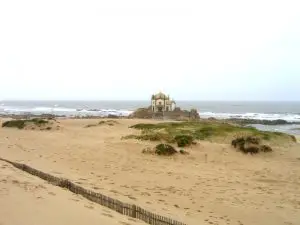Porto is a great place for visit on its own and to exploring the rest of the region, in particular the famous Douro Valley, where port wine is made.
This beautiful and multifaceted city is located in the north-west coast of Portugal. Here you can walk for days or even weeks, but still not fully enjoy the atmosphere of the city, its architecture and energy. That said, you can still cover plenty in 3 days in Porto.
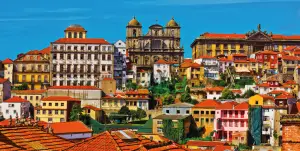
They say that an apple falls not far from its tree. Just so, beauty is also scattered around Porto. Before we dive into the details about the best day trips from Porto, below is a summary.
- North to Braga, Guimaraes, Viana do Castelo or Santiago de Compostela in Spain: Braga and Guimaraes two cities are just 25 minutes apart and are the most attractive places to visit in the north of Porto. Santiago is the most popular city in northwestern Spain and the pilgrimage site of the Camino de Santiago. Viana do Castelo is a very beautiful beach city with great architecture and a long history.
- South to Coimbra, Aveiro, Costa Nova: If you plan to travel to either Lisbon and Porto, you can do day trips to Coimbra or Aveiro, which are located between the two cities. Both these cities are located south of Porto. From Aveiro you can also travel to the colorful beach of Costa Nova.
- East in the Douro Valley: Port, although finished in Porto, begins its life in the vineyards of the Douro Valley. Round-trip boat trips on the river flowing through the valley are a day trip in themselves.
Starting point for day trips from Porto
If traveling by train is your preference, then São Bento Train Station (Estação de São Bento) will be an ideal starting point. It is from here that most of the regional trains and trains start. Railway routes passing through Porto are served by the transport company CP.

Railway communication in Porto is excellent, comfortable trains run to the cities described in this blog post almost every hour. Low ticket price is another good argument for traveling by trains. The only negative is the lack of toilets in trains.
There are no ticket machines inside Sao Bento train station. To buy a ticket you need to print out a ticket with a number in the machine. The machine is to the right of the entrance to the ticket office. On the selection panel, select the “Regional” section. The cashier will give you the Andante magnetic smart card. Save the card as you can recharge it with money before your next trip to the suburbs of Porto. Before you board the train, ALWAYS validate the ticket in a special machine on the platform.
Where can you go from Porto for a day?
1. Day trip to Braga
Braga is the religious center of Portugal. You can feel this fully if you come here to celebrate the Holy Week (Festa da Semana Santa) and St. John festival (Festa da do São João). Thousands of pilgrims flock to Braga to see the processions, dances, fairs and fireworks. However, Braga is also the youngest (by age of population) city of Portugal.
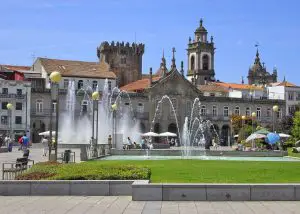
It is also the third largest city in Portugal, but do not be fooled into thinking that it is a vast, bustling metropolis. Braga feels like a provincial, pleasant and promenade city with a 12th-century cathedral and many medieval churches.
Republic Square unites the old and new city in Braga. And it is also a starting point for exploring the city as all the major sights are concentrated nearby.
Take a leisurely walk through the historical center, go to some of the many churches, admire the rows of houses and historical buildings. Do not skip the Palace Raio (Palácio do Raio), the Theater Circus (Theatro Circo) and the arch “New Gate” (Arco da Porta Nova). Later, sip coffee in the famous Brasileira Café while watching the crowds go by on Central Avenue Central.
One of the most beautiful buildings in Braga is the Palais Racio (Palácio do Raio), also known as the Mexican house (Casa do Mexicano), whose facade is almost completely covered with azulejo blue.
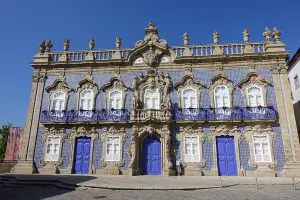
The traditional dishes of Braga are the “Bacalhau à Braga” – a cod dish, as well as a bacon and egg yolk pudding called Abbot of Priscos or pudim Abade de Priscos. We recommend that you give them a try!
7 km from Braga lies the sanctuary of Bom Jesus (Santuário do Bom Jesus), one of the main pilgrimage centers of the country. It is easily accessible by bus.
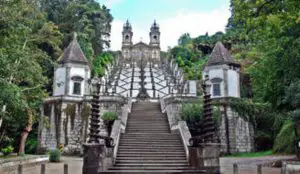
The sanctuary, located on a hill, has a church and gardens, which can be accessed via the funicular or the zigzag baroque staircase. Favorite sightseeing place for tourists in Portugal.
This sanctuary is located on a hill overlooking Braga, which offers magnificent views of the city. An impressive zigzag staircase leads to the church with its surrounding gardens and a pond. Take the funicular and go down the stairs, as there is something to see on each platform.
Braga Cathedral is the oldest in Portugal. It took hundreds of years to create and reflects many architectural styles, including Manueline, Baroque, Romanesque and Gothic.
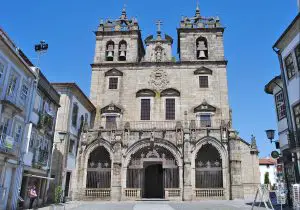
In addition to Bom Jesus, outside of Braga, the monastery of San Martinho de Tibaes and the Capella de S. Frutuoso de Montélios deserve no less attention. Nature lovers can also head to Peneda-Gerês National Park.
Tourists often combine visiting Braga and Guimaraes on the same day. The bus from Braga to Guimaraes takes about 25 minutes and costs about €6 one way. My advice to you: stay in Braga all day! The best part about this young city appears in the evenings in all its glory.
You travel from Porto to Braga by train, with several departures per day. Departures take place from Porto Campanhã or from Porto S. Bento train stations. The trip takes about an hour or less and costs about 7 €. A bus costs about 6 euros and takes a little over an hour. For timetables, travel times and costs, see the CP website.
2. Day trip to Guimarães
Guimaraes is considered the “cradle” of Portugal, because Afonso Enriques, the first Portuguese king, was born here.
The historical center of Guimaraes is on the UNESCO List. The medieval mansions of Mota-Regu, Vila-Flor, Toural and others create a unique atmosphere of the city.
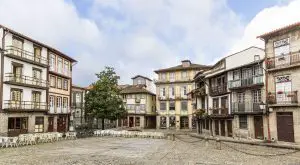
We will start our city tour in the heart of the “lower city” – Piazza Oliveira (largo da Oliveira), where the commemorative sign Padrão do Salado and the Church of Our Lady of the Olive Tree (Igreja e Colegiada de Nossa Senhora da Oliveira) rise.
Passing the city hall (Paços Municipais), we go to Santiago Square (Praça de Santiago), which in the Middle Ages served as a haven for pilgrims who traveled to Santiago de Compostella.
Santa Maria Street, where the Convento de Santa Clara Monastery and Arco Mansion are located, connects the “lower” and “upper” cities. Then you can head to the Castle, dating from the 10th century.
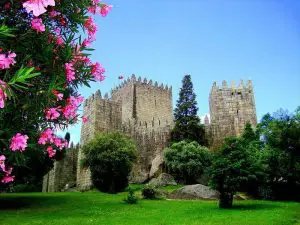
Afterwards you can visit the International Center for the Arts of José de Guimarães (Centro de Artes Internacional José de Guimarães) or the Archaeological Museum of Martins Sarmento (Museu Arqueológico Martins Sarmento).
Not far from the city center, the Palace and the Vila Flor Cultural Center (Palácio and Centro Cultural Vila Flor) with its hanging gardens, frescoed houses and rocaille decorations are worth visiting.
Your walk can finish on Mount Monte da Penha, from where one of the most amazing panoramas of Guimaraes and Northern Portugal in general opens.
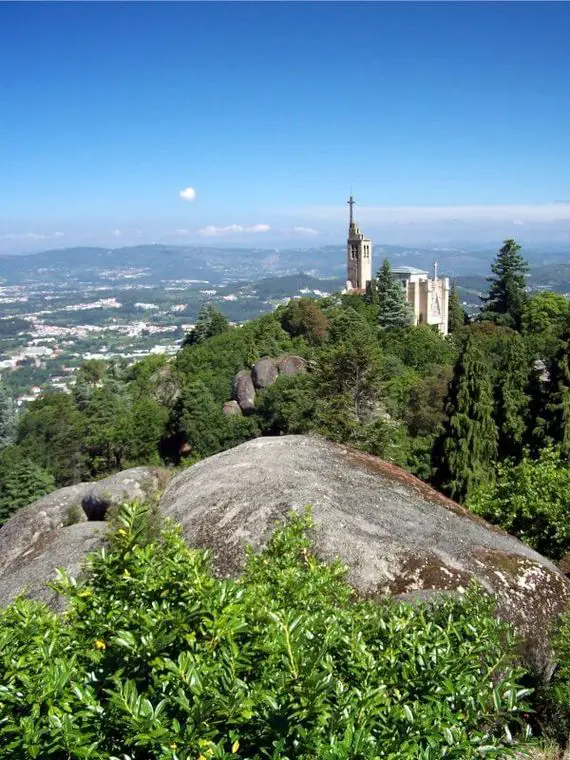
The trip from Porto Guimaraes to takes an hour and 15 minutes and costs about 3 euros one way if you take the Porto city train. An almost hourly train leaves both from São Bento Station (in the center of Porto) and from Campania Station. There is an IC train (Intercidades), which will save you about 10 minutes, but will cost you 4 times more. Schedule and pricing information is provided on the CP Rail Website.
A bus from Porto to Guimaraes takes about an hour and costs about 6 euros one way.
3. Day trip to Viana do Castelo
Viana do Castelo is one of the most beautiful cities in Northern Portugal. The city is spread out by the sea and at the mouth of the Lima River. There are a yacht marina, a trading port, a fishing port with a pier for fishermen and a shipyard.
Viana has numerous palaces, churches and monasteries, fountains and water columns: they are all part of the rich history of the city. Passing through the historical center, we will certainly get to the Republic Square – the heart of the city.
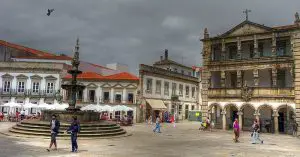
Here you can see the House of Mercy and the fountain, which date back to the 16th century, as well as the building of the former city hall of Pasos de Concelho (Paços do Concelho). Nearby is the cathedral (Sé) and the main church of Matrij (Igreja Matriz).
In Viana do Castelo, in addition to historical architecture, there are a couple of buildings and structures created according to the projects of eminent contemporary architects of Portugal. These are the Freedom Square (Praça da Liberdade), the library, the Axis Hotel, the cultural center of Viana do Castelo and others.
One cannot but mention the symbol of the city, “Heart of Viana” (coração de Viana), a unique golden piece of jewelry made by local craftsmen. Today, “The Heart of Viana” is one of the symbols of not only the north, but the whole country. Appearing at the end of the 18th century, this sign served to strengthen faith in the Sacred Heart of Jesus and combines a cornucopia, heart and tongues of flame.
How to get from Porto to Viana do Castelo: by train from Porto Campanhã or from Porto S. Bento. For timetables, travel times and costs, see the CP website.
4. Day trip from Porto to Santiago de Compostela
Santiago de Compostela is the most popular destination in Galicia, northern Spain. In fact, people will travel 1,000 kilometers (sometimes more) to get to it, since this is the end point of the Camino de Santiago.
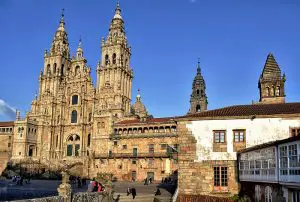
You can hike from Porto to Santiago (in the Camino variant called Camino Portugues). The tomb of St. James is open to the public whether you walked there or not, and the old city of Santiago is a UNESCO World Heritage Site.
Or take a tour of Santiago de Compostela from Porto and you can also visit the city of Viana do Castelo and its basilica.
5. Day trip from Porto to Coimbra
The oldest university in Portugal provides both old and new opportunities for this interesting and charming city. The campus is worth the trip alone to the city, but a walk through the old town is pretty good. Coimbra is also home to one of two forms of fado music in Portugal.
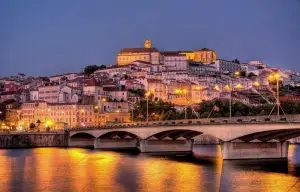
You can also consider a day trip to Coimbra from Porto, while making a stop in Fatima, where the Sanctuary of Our Lady of the Rosary is located.
6. Day trip from Porto to Aveiro
There are several reasons to go to Aveiro. Firstly, it’s beautiful there. Secondly, it is on the way to Costa Nova. And thirdly, because of this wonderful must-visit restaurant named “Salpoente”.
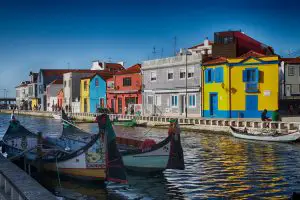
Aveiro is called the “Portuguese Venice”. The town is crossed by a whole network of canals through which you can ride on the painted Moliseirush boats for about €5. There are nowhere more canals than in Venice, but the city is still a charming place that can be easily explored on foot (although the center is about 15 minutes walk from the beautiful tiled railway station).
In the old days, these boats were used to collect algae and sargasso, today the make a tourist attraction. But do not rush to jump in moliseiros, you can take a walk around the city on foot or on the free bugas bike provided by the city council.
What can you see in Aveiro? The main beauty of the city is concentrated along the central channel: it is a series of buildings in the Art Nouveau style. A complete list of buildings and their location are indicated on a map that can be taken at the travel agency.
After a long walk around the city, visit the Aveiro Museum, located in the monastery of Jesus. The main attractions here are the mausoleum of Princess St. Joanna, the daughter of King Afonso V, and the interior of the church: gilding of wooden carvings. Wood carvings can also be seen in abundance in the chapel of Senor das Barrocas, and in a more modest decoration, in the Church of Mercy (Igreja da Misericórdia).
For lunch, head to the aforementioned restaurant specializing in seafood and not just Salpoente. Today it ranks 1st according to TripAdviser.
Taste the traditional sweetness of Aveiro “Ovos moles” (soft eggs) – a dessert made from eggs and sugar. “Soft eggs” are sold in wooden barrels, often wrapped in thin layers of dough in the form of marine elements.
In the vicinity of Aveiro there are plenty of places worth visiting. Here you will find both salt mines (salt is mined in Aveiro) and the National Reserve “Dunes of Saint Jacinto” (Reserva Natural das Dunas de São Jacinto) with its almost wild beaches. The highest lighthouse in Portugal on the beach of Barra (Praia da Barra). And you can go to the famous coast of Costa Nova with its bright houses and the hectic ocean.
How to get from Porto to Aveiro: by train from Sao Bento. You can also use high-speed trains, but in this case, you need to change trains at the Porto-Campanha railway station. Trains run not much faster, but cost more. For schedule, travel time and cost, see here.
6. Day trip from Porto to Costa Nova
Costa Nova is some kind of art therapy. The town consists entirely of striped wooden houses called “Palheiros”. Previously, these were fishing houses, where each had its own color for reference, now it is a tourist move.
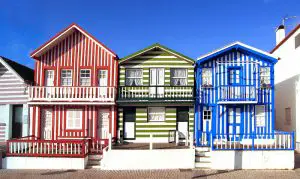
Walking around the town, one gets the feeling that you are on a movie set. The houses are so bright and photogenic.
After taking plenty of pictures, you can head to the beach. Praia da Costa Nova is a great place for hiking or a picnic. You won’t be able to swim here as the sea is restless. But therefore you can go surfing. The ocean can be admired forever, so do not miss the last bus to Aveiro!
How to get from Aveiro to Costa Nova: by bus, the schedule can be taken at the information kiosk at the railway station. You can catch a bus near the central canal. Buy a ticket from the driver in two directions at once. Travel time is approximately 40 minutes. On the way you will see the lagoon, salt mountains and Barry town with a lighthouse.
7. Day trip from Porto to Douro Valley
The Douro Valley spans the Douro River in inland Portugal and is one of the country’s main wine regions. The Douro Valley is best known for producing port. Portugal’s world-famous sweet strong wine begins its life here before being transported to the city of Porto.
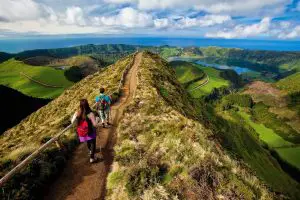
A trip to the Douro Valley begins in Porto.You can use various types of transport options such as rail, road, boat, cruises, to reach this valley.
We advise you to visit some of the many wineries called quintas. Take part in the grape harvest from September to October. Visit the wine growing villages of Barcos, Provesende, Salzedas, Trevões, Ucanha and Favaios.
But this is another story, clearly cannot be done one day!
8. To the ocean
City transport in Porta quickly takes you to the wide beaches on the Atlantic. Pay attention to the beach of Miramar (Praia de Miramar). A great beach with developed infrastructure, but the main attraction of the beach is the cliff church (Capela do Senhor da Pedra). The chapel was built on the holy rock-stone of Senhor da Pedra in the 17th century. This rock has been an object of worship since pagan times. At low tide, it can be reached by land; at high tide, the church is completely surrounded by ocean water. One can only guess how the church remains untouched during winter storms.
